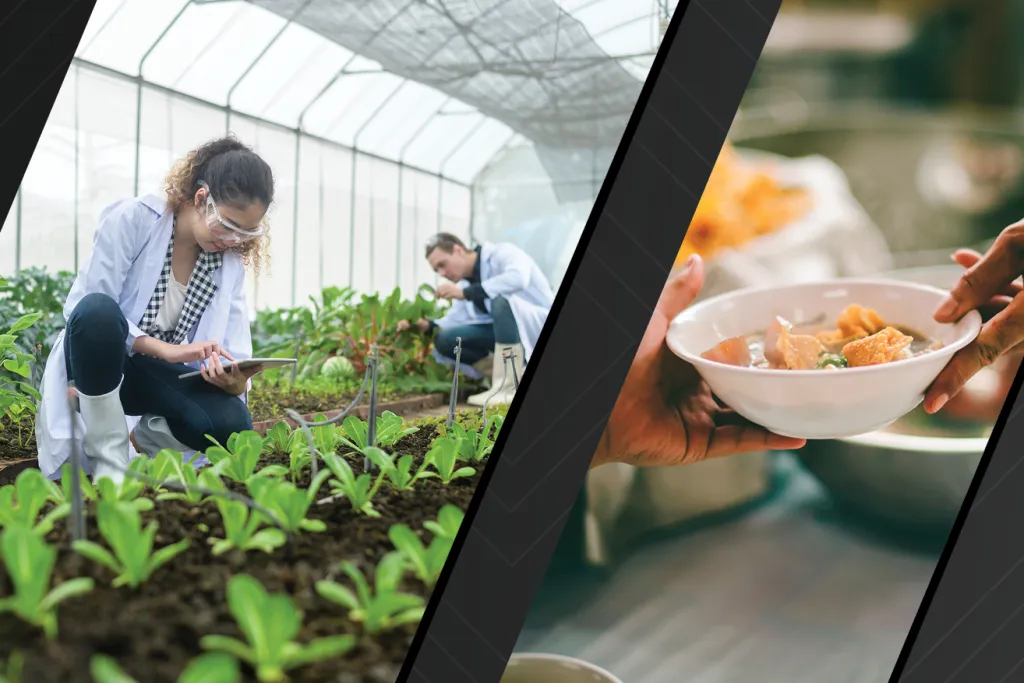According to the Food and Agriculture Organization of the United Nations, millions of people around the world cannot afford a healthy diet, putting them at high risk of food insecurity and malnutrition. But ending hunger isn’t only about supply. The problem is access and availability of nutritious food, which is increasingly impeded by multiple challenges including the COVID-19 pandemic, conflicts, climate change, inequality, rising prices and international tensions.
With support from USDA’s National Institute of Food and Agriculture, the nation’s Land-grant Universities are conducting critical research and education to mitigate food insecurity.
Assessing the Effect of Climate Change and the Shocks on Food Security
The effect of climate change on agricultural systems is a field garnering increased attention. However, it is likely climate change will affect far more than just agricultural systems and will impact the entirety of the food system, including food security.
University of Vermont researchers conducted a study to understand the relationship between climate change and food security. They also performed a social media analysis of how U.S. residents communicate about food and climate shocks and finally created a mental model through an interview process with Vermont residents. The study aimed to assess factors in a food system influencing how climate change connects to food security broadly, including communication regarding this topic, and the development of frameworks to address potential impacts of climate change on food security.
Global results showed food security literature broadly aggregates around food availability, accessibility, utilization and stability with an uneven distribution in regions among those studying this topic. Results showed higher long-term temperatures to be inversely related to overall children diet diversity and higher rainfall the year before is associated with greater diet diversity.
Regional/country project studies in Sub-Saharan Africa revealed women and men seek out financial credit at the same rate, but that women are less likely receive formal loans from banks or the government. Women were also more likely to spend their credit on education and medical expenses, while men were more likely to spend theirs on agricultural inputs and livestock. In the United States, a Twitter analysis on how food is discussed during extreme climate events found individual people to be the most important for information sharing during natural hazard events. The type of natural hazard determined the timeframe of the Tweets and increases in food security and food-related Tweets in relation to natural hazards was observed.
Local researchers found Vermont and Maine farmers were more likely to consider community well-being and environment in their farm system than agricultural advisors thought farmers did--providing critical information on what farmers may need moving forward in dealing with climate change.
Addressing Food Insecurity through Job Train Partnership
More than 134,000 people in San Mateo County, California, live at or below 185% of the poverty level and 18% are SNAP-Ed eligible. Given the pandemic and ongoing economic crisis, this number is expected to grow. Of the SNAP-Ed eligible population, 66% of adults are overweight/obese.
To address these health concerns, CalFresh Healthy Living (CFHL) and University of California Cooperative Extension in San Mateo County (UCCE) have partnered with JobTrain, a nonprofit education and training institution delivering the food resource management curriculum “Plan, Shop, Save and Cook” to adult participants for the past eight years.
JobTrain provides career training in fields such as culinary arts, certified nursing assistant, medical assistance, carpentry, building maintenance, and IT support and services. While this training enables students to move from unemployment into careers offering self-sufficiency, nutrition and food resource management classes offer important life skills in consumer decision making, dietary health and wellness.
JobTrain students learn about MyPlate, shopping on a budget, preparing healthy meals and snacks for families, reading food labels and the importance of physical activity. And 85% of the more than 125 students participating in Plan, Shop, Save, Cook reported improvements ranging from 43% comparing unit prices more often to 60% reading/using nutrition facts labels more often. In addition, 28% of participants reported running out of food less often before the end of the month – suggesting they were more food secure after taking the course. These outcomes demonstrate how CFHL and UCCE San Mateo County is contributing to the University of California’s public value of safeguarding abundant and healthy food for all Californians.

